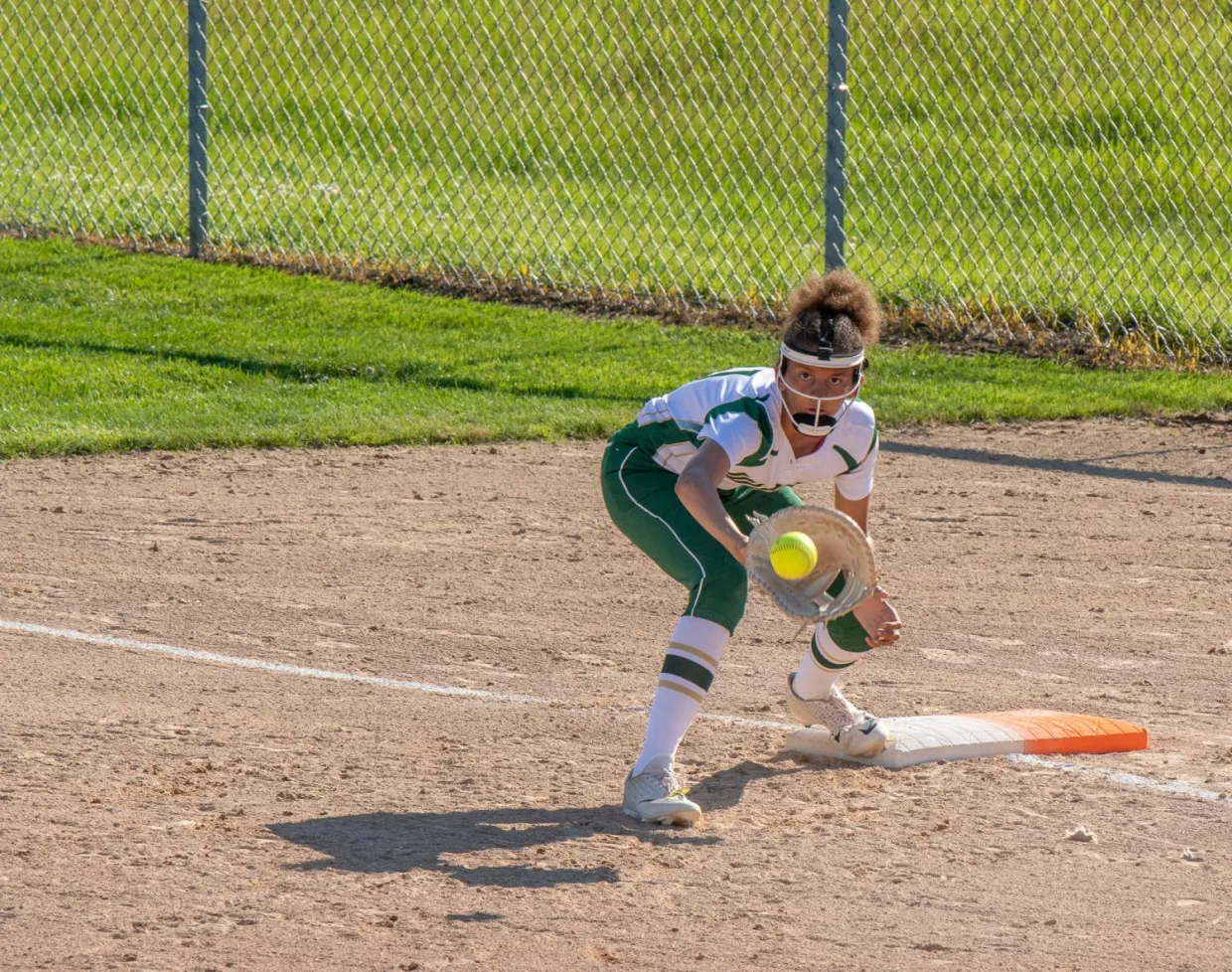Livia returns to the softball field better than ever after surgery for thoracic outlet syndrome

As a freshman softball player at Iowa City West High School, Livia Williams noticed during practices and games that her throwing arm would often feel numb and her hand would get swollen.
“My hand kind of looked like a tomato,” says Livia, who plays first base and outfield and occasionally pitches. “Sometimes when I pitched I couldn’t feel my hand at all. I threw the ball and it just went wherever.”
Livia’s mother, Ange Williams, knew these were unusual symptoms for an otherwise-healthy 14-year-old athlete. She scheduled an appointment at University of Iowa Hospitals & Clinics, where vascular surgeon Maen Aboul Hosn, MD, diagnosed Livia with thoracic outlet syndrome (TOS).
Hosn specializes in diagnosing and treating TOS, a little-known condition that can cause symptoms such as numbness, swelling, tingling, and pain in the hand, arm, shoulder, and neck. TOS happens when the nerves and vessels that provide feeling and blood to the arm are squeezed by the bones and muscles around them.
Hosn worked with Livia and Ange to come up with the right treatment plan, including physical therapy and surgery, to make sure Livia could get back to playing softball without the symptoms.
Difficult to diagnose
People who have TOS have a narrow thoracic outlet—an area near the shoulder where blood vessels and nerves pass from the chest to the arm. Some people are born with a narrow thoracic outlet. For others, the thoracic outlet narrows over time from scarring or inflammation caused by repetitive motions or by a previous injury.
Repetitive activities like sports and certain types of manual labor often make the symptoms worse. In many cases, people don’t know they have TOS until physical activity brings it to their attention.
While TOS can affect anyone, Hosn says it’s often found in younger women, who are frequently at risk of having their health concerns minimized, especially when the source of the problem is difficult to identify.
TOS can go unnoticed for years because it can’t be detected with scans, and not many medical professionals are trained to look for it. It’s a clinical diagnosis made by having a conversation with the patient about symptoms, common activities, and health history.
“This has been a struggle for some patients who have TOS,” Hosn says. “They end up having MRIs or other tests, and then they’re told that nothing’s wrong with them. People need to be aware that this exists, and a diagnosis just requires talking to them.”
Without proper treatment, TOS can cause serious problems, including dangerous blood clots and permanent weakness in the hand and arm.
Determined to keep playing
When Livia told her mother about the symptoms she’d been having, Ange shot video of the swollen hand and sent it to a UI Hospitals & Clinics nurse using the MyChart app, which includes a way to send messages with attachments to UI Health Care providers.
“It’s a great tool,” Ange says. “Words and descriptions of symptoms and pain can be interpreted in different ways. Pictures and videos to go with them definitely help.”
That message led to an appointment with Hosn, who determined that Livia was born with a narrow thoracic outlet.
Hosn says TOS patients as young as Livia are often reluctant to go through treatment, especially if it includes surgery. But he says Livia was different. She was determined to do whatever was necessary to continue her goal of playing softball throughout high school, into college, and maybe even professionally.
“A lot of kids would say, ‘OK, I’ll stop playing softball and do something else,’” Hosn says. “Livia was adamant about what she wanted. She had done her research on TOS and knew what she was talking about.”
A standout season
Livia did three months of physical therapy, but when the symptoms didn’t go away, Hosn recommended surgery to remove part of one rib to help free the space needed for proper blood flow and nerve function. He scheduled the procedure in the summer before Livia’s sophomore year, to give her time to recover and get back on the field in the fall.
“He understood what I had in mind and got me in really fast,” Livia says. “I was happy about that.”
Less than two months after surgery, Livia was playing again and had no symptoms. As a sophomore she won a spot in the starting lineup of the varsity team and had a standout season, earning all-conference honorable mention recognition.